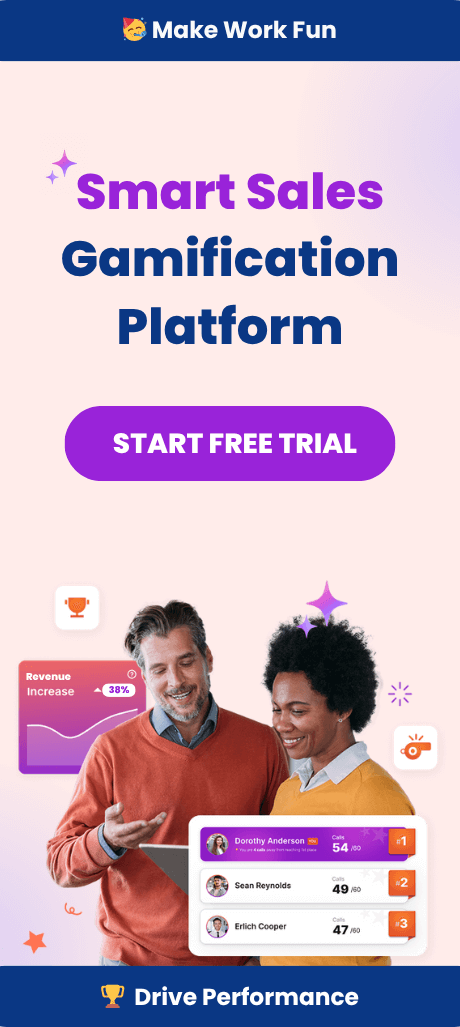Is Gamification the Future of Employee Engagement?
The Evolving Landscape of Engagement
Employee engagement has become a boardroom priority as companies recognize its impact on productivity, retention, and culture. Enter gamification: once dismissed as a passing trend, it is now being taken seriously as both a science and a strategic lever for leaders seeking lasting engagement gains. But is gamification poised to be the keystone in the future of workforce motivation, or does it risk becoming another short-lived experiment? This article investigates the growing centrality of gamification to employee engagement, focusing on digital leaderboards, engagement software, and the changing expectations of executive leadership.
Why Gamification Captures Executive Attention
Today’s workforce – dispersed, specialized, and digitally immersed – is searching for purposeful, visible, and engaging work. Traditional motivational levers like gift cards or trophies fail to address the evolving dynamics of modern business. Gamification, defined as applying game mechanics to non-game contexts, addresses these needs in several ways:
- Immediate, transparent feedback through digital leaderboards
- Friendly competition and recognition that appeal to intrinsic motivation
- Personalization at scale, using software that adapts for individual and team goals
Executives are intrigued not just by the novelty, but by data from platforms like Spinify, which reveal measurable upticks in engagement and performance indicators.
This deep dive on gamification for engagement offers insight into why companies globally are moving toward these solutions.
Dissecting Employee Gamification Platforms
Not all engagement software is created equally. The best gamification platforms create a seamless bridge between business goals and personal motivation. These platforms are increasingly sophisticated, integrating with learning management systems, CRMs, and communication tools to pull real-time data into engagement dashboards. Here is why leading platforms matter:
- Real-time goal tracking aligns personal performance with company targets
- Configurable challenges enable sales VPs and enablement leads to tweak incentives and metrics dynamically
- Customizable leaderboards ensure recognition is timely, relevant, and visible across hybrid teams
For companies assessing options, understanding differences in gamification software is paramount. As explored in this recent guide on performance dashboards, integration and data transparency have become non-negotiable for sustained engagement.
The Science Behind Digital Leaderboards
Leaderboards have moved well beyond printouts in the break room. Today’s digital leaderboards, embedded in engagement management software, allow for nuanced recognition and more precise feedback cycles. Research shows that visibility of progress triggers dopamine responses, reinforcing positive behaviors in ways traditional recognition cannot. But there’s a strategic nuance:
- Digital leaderboards can be tailored to highlight not just top performers, but also personal bests and key improvement metrics.
- They foster team cohesion by surfacing collective progress in addition to individual competition.
- Configurable privacy prevents unhealthy competition and can encourage those new to sales or emerging from underperformance.
In practice, these features have proven critical for firms shifting toward outcome-based management. According to recent findings, digital leaderboards, when combined with a thoughtful rewards system, drive engagement in teams that would otherwise disengage. The shift is not just technological, but also cultural, as organizations learn to use leaderboards as tools for ongoing coaching and celebration. For a more nuanced perspective on applying leaderboards, this analysis of leaderboards done right is instructive.
Gamification: Beyond the Gimmicks
Critics have reasonably challenged gamification’s long-term efficacy. They warn that the thrill of competition, scores, and badges can wane, particularly if deployed without thought. However, the conversation is shifting toward strategy-first gamification:
- Aligning challenge mechanics with actual business outcomes.
- Adjusting rewards to reflect evolving values: from monetary incentives to experiential or development-based rewards.
- Integrating AI-powered insights to suggest optimal KPIs and recognize ‘quiet contributors.’
Rather than adding a superficial game layer, organizations that see the best returns are folding gamification mechanics into the fabric of their performance management, onboarding, and team communication strategies. These approaches treat gamification as a journey, not a one-off contest.
Personalization and Employee-Centric Gamification
Modern engagement management software allows for precise segmentation and customization. The most effective employee gamification platforms empower managers to:
- Set team or individual challenges based on past performance and future goals.
- Choose from a library of contest templates, customizing the mechanics and rewards.
- Integrate recognition with broader employee experience initiatives—tying badges and awards to learning opportunities, peer recognition, or even wellness programs.
For example, a sales manager can set up a leader-based contest for top performers, while simultaneously running a personal improvement contest for those aiming for career advancement. Gamification, as a tool in the hands of thoughtful leadership, becomes an extension of a company’s talent strategy rather than a bolt-on. The flexibility of software like Spinify’s demo illustrates the potential for scalable personalization.
Employee Motivation: The Human Element
For gamification to truly shape the future of engagement, its deployment must consider what motivates people over the long term. Research emphasizes several dimensions of motivation enhanced by gamification:
- Mastery: The drive to learn and grow – supported by stretch goals and ongoing feedback.
- Autonomy: The ability to choose challenges or opt into competitions that fit one’s desired growth path.
- Purpose: Crafting contests and recognition to align with company values, charitable giving, or team wins.
Engagement is less about fun and more about fulfillment. Human-centric gamification places the employee experience at the center, using digital tools to amplify, not replace, high-trust managerial relationships. This nuanced approach moves engagement metrics from input-driven (attendance, logins) to outcomes such as learning, satisfaction, and collaboration.
Data Transparency, Performance, and Accountability
The link between engagement and performance is rarely clearer than when robust dashboards and leaderboards are in play. Gartner research suggests that when employees have access to real-time progress data, the cycle of feedback and iteration is shortened, and accountability is heightened. Engagement management software leverages this principle to:
- Reduce subjectivity in performance reviews by providing concrete, quantitative data for discussion.
- Encourage ongoing coaching, as managers can identify trends and intervene in real time, not just at year-end.
- Support equitable recognition, ensuring ‘unsung heroes’ are as visible as front-line stars.
This data-driven engagement stands in stark contrast to legacy approaches, helping organizations make engagement a strategic, measurable initiative. As detailed in this breakdown on engagement and performance, the best organizations leverage gamification data across functions for widespread decision-making.
Case Studies: Where Gamification Moves the Needle
Leading organizations provide compelling evidence that gamification platforms create real change. In the financial services sector, for example, digital leaderboards have been credited with a +10% increase in monthly sales activities after six months. In software companies, customized engagement software modules have halved new hire ramp-up periods, making onboarding less daunting and more effective. Three patterns consistently emerge:
- Successful companies do not use a one-size-fits-all approach—they combine several engagement levers.
- The best results come where executives model participation, signaling a culture of acknowledgment and learning.
- Gamification tools are paired with intelligent reward systems, from on-the-spot appreciation to tiered career incentives.
These cases also reveal that the most sustainable outcomes occur when the narrative of competition is collaborative and developmental—not just about winning, but about making measurable progress together.
Cultural Transformation: The Subtle Power of Gamification
The ultimate question is not whether gamification can boost short-term engagement, but whether it can catalyze culture change over time. In organizations where visibility, feedback, and progress tracking become second-nature through leaderboards and engagement platforms, cultural shifts emerge:
- Teams become more cross-functional: recognition is not siloed, and ideas flow more freely.
- Psychological safety increases because mistakes and learnings are both visible and destigmatized.
- Continuous improvement becomes habitual, not exceptional; weekly wins and personal bests are celebrated on par with quarterly targets.
As priorities evolve in hybrid and remote workplaces, engagement board ideas and company-wide contests may just be the fabric that holds distributed teams together.
Innovation and the AI-Powered Future
The next evolution is coming fast: artificial intelligence is being layered onto engagement management software to suggest challenges, predict disengagement risk, and automate tailored recognition. AI gamification is more than a buzzword—it is emerging as a critical management tool. With AI, platforms can:
- Identify which employees are likely to respond best to which types of challenges.
- Adjust contest difficulty dynamically, keeping engagement high without fatigue.
- Flag disengagement and recommend leadership interventions, blending HR analytics with gamification intelligence.
Executives should watch this trend closely, ensuring that their chosen engagement software is committed to responsible, transparent AI usage. For an evolving view on this, recent posts like AI gamification and engagement are essential reading.
Evaluating Success: Metrics That Matter
Ultimately, measuring the impact of gamification efforts requires more than participation rates or contest completions. The real ROI is found where engagement software delivers on critical people and business outcomes. Executive teams should define and track:
- Employee satisfaction and retention scores, compared to pre-gamification baselines.
- Performance improvements by function or tenure group, mapped to digital leaderboard data.
- Collaboration indicators, such as cross-team nominations or peer recognition.
- Upward feedback about fairness, relevance, and accessibility of contests and rewards.
And, crucially, teams must adapt their strategy as the workforce evolves—using continuous feedback to refine mechanics and measure new forms of value creation.
Looking Ahead: Guiding Principles for Executive Leaders
Gamification is no longer a fringe experiment; it is a proven lever—when deployed with nuance, empathy, and business savvy. Executive leaders exploring or scaling engagement management software should keep these principles in mind:
- Focus first on strategic goals: tie gamification contests, boards, and leaderboards to what matters most for your unique business context.
- Choose platforms that balance transparency, flexibility, and ease of integration with other business systems.
- Prioritize ongoing coaching and team dialogue over one-off competition: use gamification to deepen—not distract from—manager-employee relationships.
- Commit to ongoing evaluation, learning from both early wins and setbacks.
For organizations seeking a partner on this journey, considering a free trial of a leading platform like Spinify allows you to explore which mechanics and dashboards resonate most—with data and executive support guiding the way.
The Final Verdict: Sustained Engagement or Fading Trend?
There is justified optimism about the future role of gamification in employee engagement. The convergence of digital leaderboards, engagement management software, and AI-powered personalization is creating a new playbook for sales leaders, enablement professionals, and CEOs. The path to sustained engagement lies in treating gamification not as software or a project, but as an evolving, strategic pillar of company culture and leadership. In this sense, gamification’s best days are ahead—and for those who get it right, the rewards are durable, meaningful, and measurable.



